Falcon Heavy to the rescue
by Ajay Kothari
Monday, May 15, 2023
It may take SpaceX some time to surmount all the legal challenges involving its Starship vehicle as well as proving that it is satisfactorily reliable. It will happen, eventually, but it may take a while. But all is not lost.
While SpaceX continues to work through the issues with Starship, we should not lose sight of several key developments, as well as our need for exigency to start placing larger payloads on the lunar surface:
- SpaceX’s largest operational vehicle, Falcon Heavy, has had six stupendously successful flights in as many attempts. That included many booster stage recoveries to be used again. This is a huge accomplishment and offers a path forward for us to answer another exigency.
- China and Russia are planning to start building lunar bases first and land taikonauts before 2030.
- Regardless of when Starship becomes reliably available, and what the SLS and Artemis program plans are, Falcon Heavy offers a huge additional quiver in our pocket, surely for large quantities of cargo delivered on surface to be used as equipment and habitats, and as in-situ resource utilization (ISRU) ideas start coming to fruition. As they must for us to claim a seat at the table which is crucial.
- Including this option will add a lot to our capability without any discontinuity.
Principally the method calls for launch of one of the commercially available reusable first stage rocket systems, the most immediately available being the Falcon Heavy. The expendable upper stage would reach low Earth orbit (LEO) first and remain there for a few days. That’s followed by another launc where the second upper stage docks with the first in orbit. Do this multiple times as needed for the payload envisioned, get to the Moon and use the tanks for habitats there.
We have been docking items in LEO for more than 50 years. We do not need to be proficient in refueling for now. The question answered here is, can we possibly get to a large enough propellant fraction to land on Moon or Mars? This particular work identifies a spectrum of possibilities, from Moon to Mars, from payload of 1,100 to 51,700 kilograms on the lunar surface, using the same virtual railroad. More importantly, with the combination and permutation of number of Falcon Heavy flights, how many upper stages are docked and/or refueled, the payloads desired, and the destination delta-v, we will have almost infinite variations available that builds a real “railroad” to most destinations in the solar system.
Upper Stages Docked (not refueled):
Two and Three Flights of Falcon Heavy
 |
Four and Five Flights of Falcon Heavy
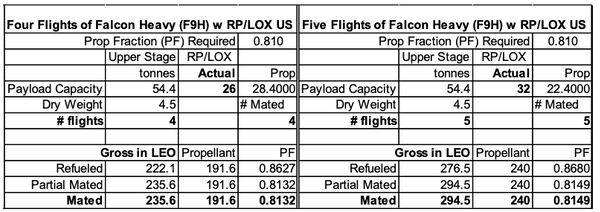 |
Six and Seven Flights of Falcon Heavy
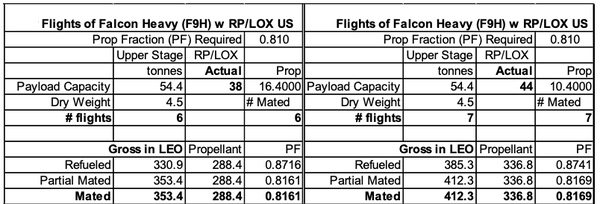 |
Upper Stage Refueled:
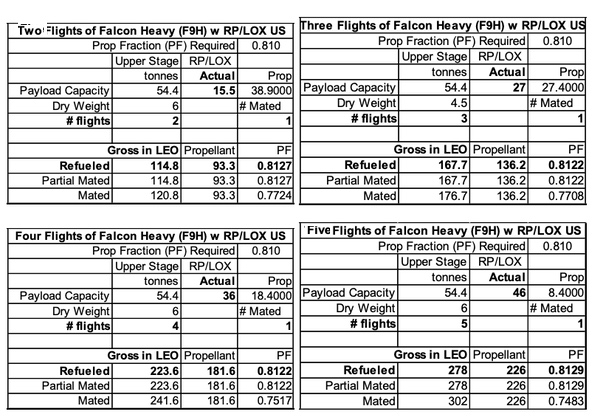 |
The important consideration to remember here is that the refueling option not only gives larger payloads to the lunar surface for the same number of Falcon Heavy flights, but its rate of increase is also higher compared to the purely docked version. The negative is being able to take only two tanks to the Moon (or Mars later) for repurposing them, with all the rest being expended on reentry or perhaps kept in LEO for future fuel depot use. Of course, some combination of docked versus refueled stages can also be envisioned to support needs as they emerge.
A Scenario with Four Falcon Heavy Flights
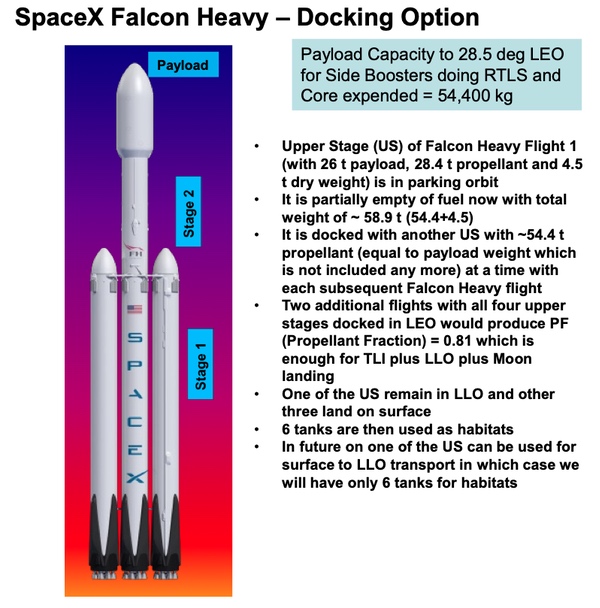 |
Upper Stages Docked in LEO Ready to go to Moon
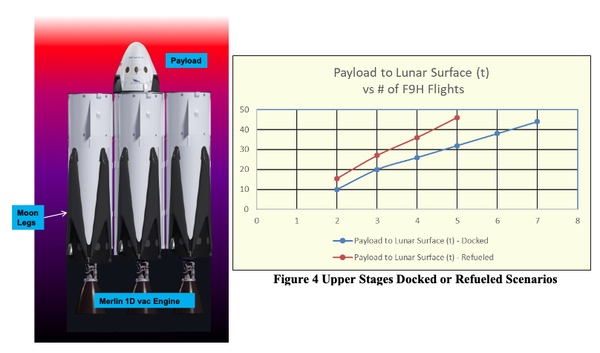 |
This option is available today. It would be much cheaper than anything else. It is a method no other country has available today. We can use several sets of such flights to start distributing infrastructure at many locations on Moon as would be advised by some of the Commercial Lunar Payload Services program elements. Let us take advantage of it.
Note: we are using a new commenting system, which may require you to create a new account.
No comments:
Post a Comment